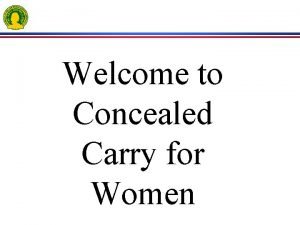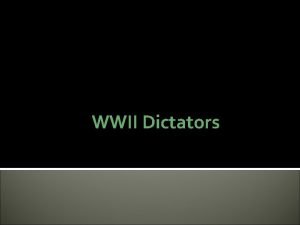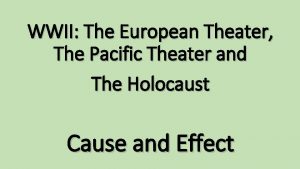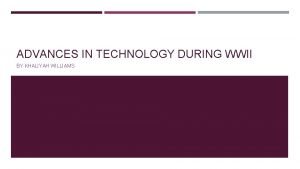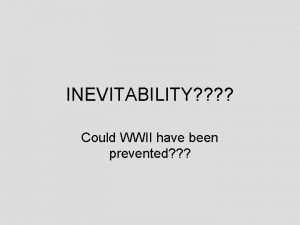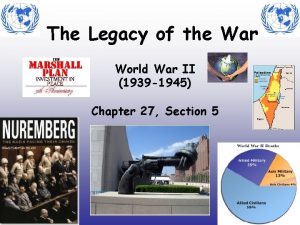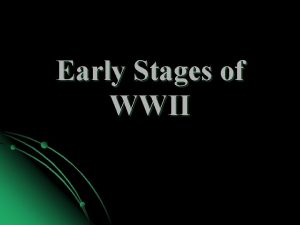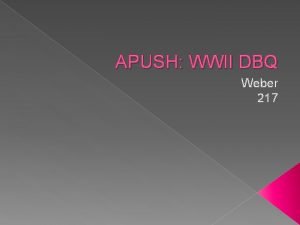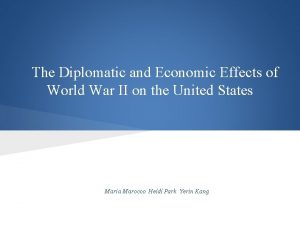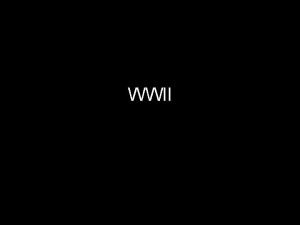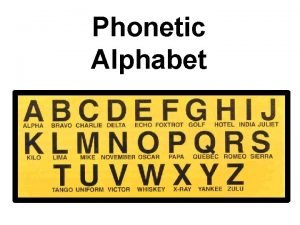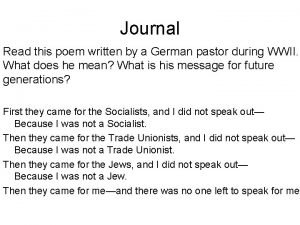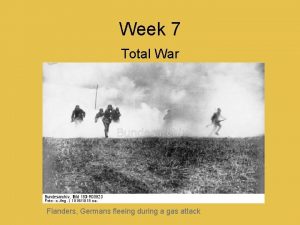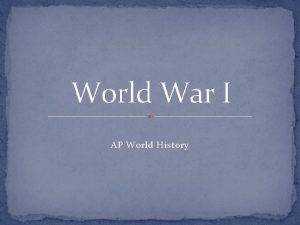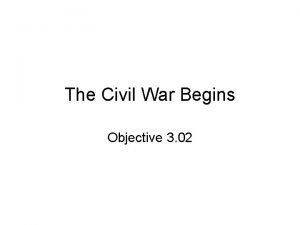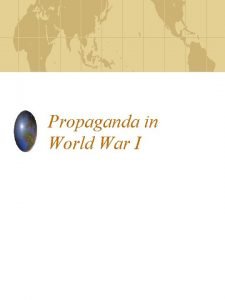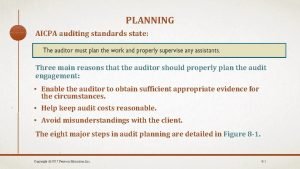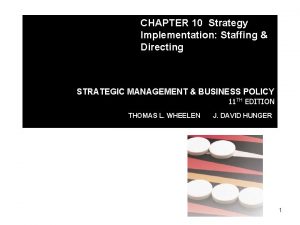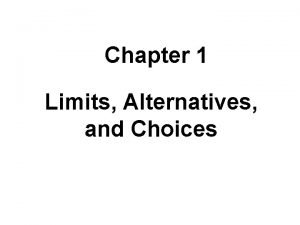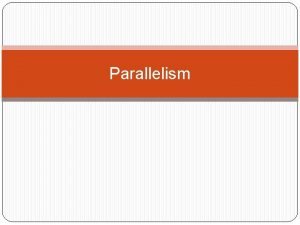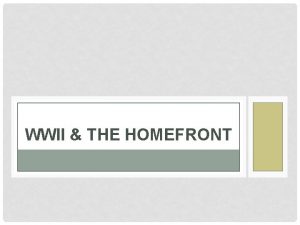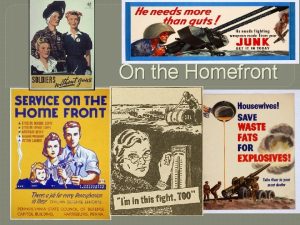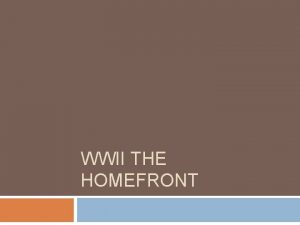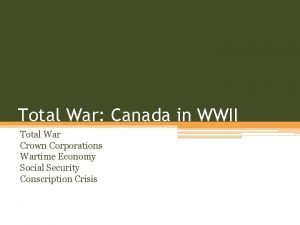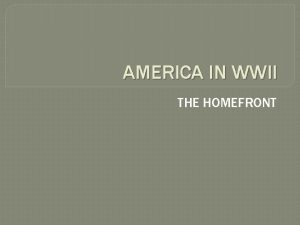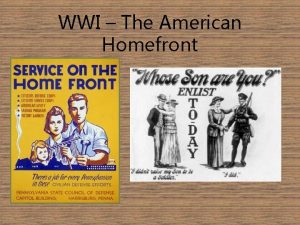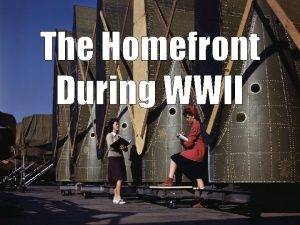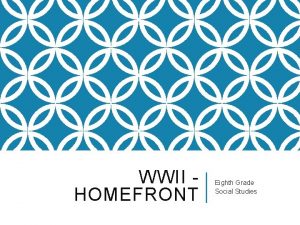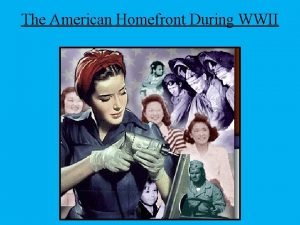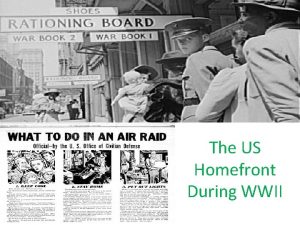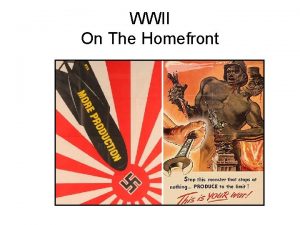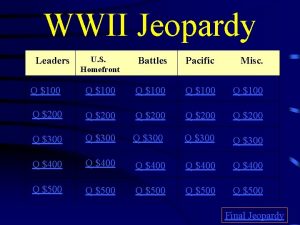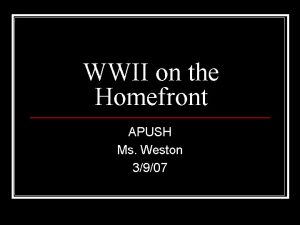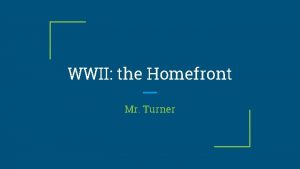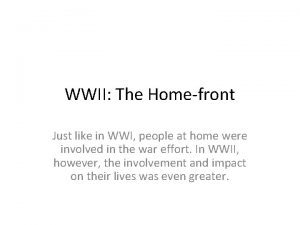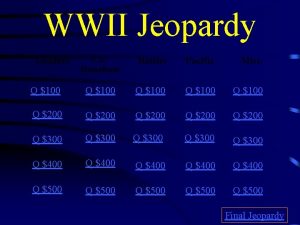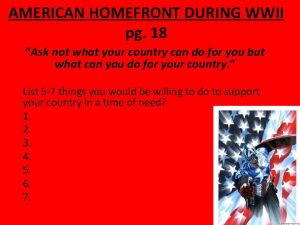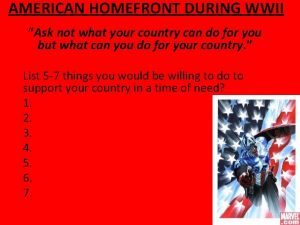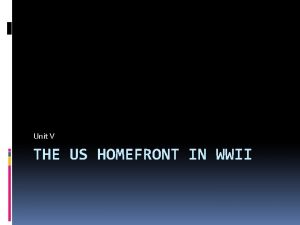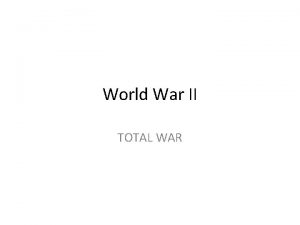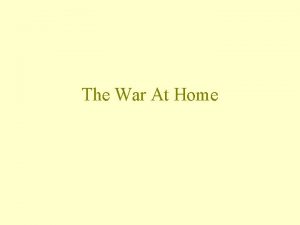WWII Homefront Total War Total war involves a





















































- Slides: 53

WWII Homefront

Total War Total war involves a country fighting a war not only on the battle fields but also on the Home Front as well by encouraging the following: 1. Rationing of materials (food & gas) for purpose of conservation 2. Selling & buying war bonds 3. Creating propaganda 4. Increasing wartime factory production

Homefront Government Regulation • Much like during WWI, the U. S. Government under President Roosevelt became much more involved day to day factory production during WW 2 for national defense purposes. • The government also got involved in controlling the economic life of U. S. citizens to ensure conservation of war materials and food needed to defeat the Axis Powers.

Office of Price Administration 1. Set limits on prices for food, gas, and other war related materials. 2. Set up rationing system during WW 2 to prevent materials & foods from becoming scarce. War ration stamp books were issued to Americans and honored by stores during the duration of the war.








National War Labor Board 1. Served as a government negotiating agency between management & labor to prevent work stoppages (lock-outs and strikes) during WW 2.

War Production Board 1. Government agency set up to regulate war factory production. 2. Similar to War Industries Board from WW 1 3. Many automobile factories in Detroit fell under this agency including the Ford Willow Run Factory down the road from us.


Rosie The Riveter

Women in the WWII Workplace • During WWII, 6 million women entered into the workplace. • Women made up 35% of the total workforce during the war years. • 33%, or approximately 2 million, of these jobs held by women, were in defense factories building tanks, planes, ships and other military material. • The remaining number of jobs were in the secretarial and medical fields

Many Rosies

Ford Willow Run Plant



• Willow Run Airport has a rich history, dating back to 1941 when Henry Ford and Charles Lindbergh built the worlds largest bomber facility at the airport. Willow Run helped Detroit to get the nickname, “The Arsenal of Democracy”. • During World War II, almost 8, 700 B– 24 "Liberator" bombers were built at Willow Run. During its peak production, the plant employed 42, 000 people including "Rosie the Riveter". • I– 94 freeway was extended to Willow Run by Henry Ford for quick employee commuting.

I-94 Edsel Ford Freeway


B-24 Final Assembly



Canton Ypsilanti Belleville


Detroit Arsenal Tank Plant Warren, Michigan (1940) • Opened by Chrysler as part of the Chrysler Defense Division in 1940, the Detroit Arsenal Tank Plant built 25% of the nearly 90, 000 tanks produced by the U. S. A. during WWII. • President Roosevelt referred to Detroit as “the great arsenal of democracy” because of our ability to convert automotive factories to war production factories quickly.




Made in Detroit: Mc. Cord Radiator Co.

More Examples of Propaganda











The Tuskegee Airmen • Select group of African-American pilots trained at Tuskegee Institute in Alabama • A segregated unit of the U. S. Army Air Corps during WWII. They made up the 99 th Pursuit Squadron escorting bombers in North Africa and Europe. • Their record for not losing bombers was so good that by the end of the war in Europe they were the most requested escort squadron (black or white).





• "We were fighting two battles. I flew for my parents, for my race, for our battle for firstclass citizenship and for my country. We were fighting for the millions of black Americans back home. We were there to break down barriers, open a few doors, and do a job. " Joe Gomer Tuskegee Airman

Japanese American – 100 th Battalion • Japanese-American soldiers that served in Italy and North Africa • Became known as the Purple Heart Battalion • The 100 th Battalion is the MOST DECORATED unit in U. S. history


 Gungoddess holster
Gungoddess holster Homefront wsgc
Homefront wsgc Wwii picture
Wwii picture 1500 dead in hawaii congress votes war
1500 dead in hawaii congress votes war Advances in technology during wwii
Advances in technology during wwii Wwii test review
Wwii test review Could wwii have been prevented
Could wwii have been prevented Wwii study guide
Wwii study guide What caused ww2
What caused ww2 Nye committee ww2
Nye committee ww2 Apush wwii dbq
Apush wwii dbq Source analysis
Source analysis German aggression map
German aggression map Wwii picture
Wwii picture Wwii show
Wwii show Ww2 military alphabet
Ww2 military alphabet Wwii
Wwii Total revenues minus total costs equals
Total revenues minus total costs equals Total revenues minus total costs equals
Total revenues minus total costs equals Total revenues minus total costs equals
Total revenues minus total costs equals Unidad 3 razones financieras
Unidad 3 razones financieras Total revenue minus total expenses
Total revenue minus total expenses Total war
Total war Total war world history definition
Total war world history definition What was the union's three part plan
What was the union's three part plan Total war propaganda
Total war propaganda Comparing reconstruction plans venn diagram
Comparing reconstruction plans venn diagram Contact force examples
Contact force examples Proxy wars
Proxy wars War at home vs war abroad madison
War at home vs war abroad madison Why was the civil war the first modern war
Why was the civil war the first modern war Chapter 30 the war to end war
Chapter 30 the war to end war Vietnam war
Vietnam war Was josette dugas pro war
Was josette dugas pro war Ich war du warst er war
Ich war du warst er war Chapter 30 the war to end war
Chapter 30 the war to end war Lesson 1 the origins of the cold war
Lesson 1 the origins of the cold war Ich war du warst er war
Ich war du warst er war Toward civil war lesson 3 secession and war
Toward civil war lesson 3 secession and war Involves individual differences in behavioral styles
Involves individual differences in behavioral styles Initial audit planning involves four matters
Initial audit planning involves four matters Is holistic qualitative or quantitative
Is holistic qualitative or quantitative Heterotrophic nutrition involves
Heterotrophic nutrition involves It involves climbing a bamboo pole. *
It involves climbing a bamboo pole. * Strategic management involves the directing controlling
Strategic management involves the directing controlling Society's economizing problem involves
Society's economizing problem involves It involves the same techniques as in traditional painting
It involves the same techniques as in traditional painting Therapeutic milieu
Therapeutic milieu Parallelism involves
Parallelism involves What is a master scene
What is a master scene Asexual reproduction involves *
Asexual reproduction involves * The first step in the scientific method involves
The first step in the scientific method involves Scientific method involves
Scientific method involves Double transposition cipher
Double transposition cipher
